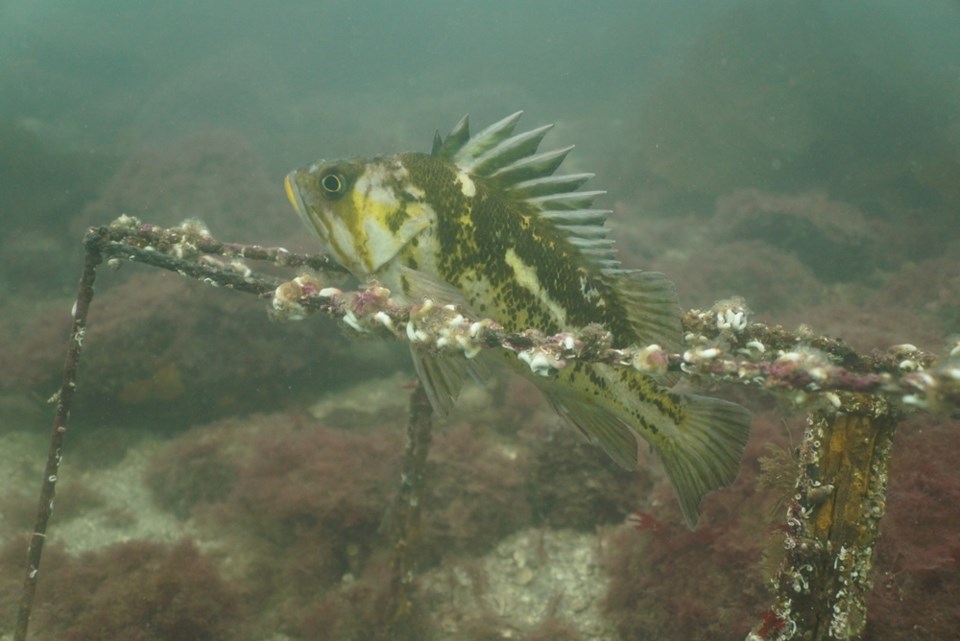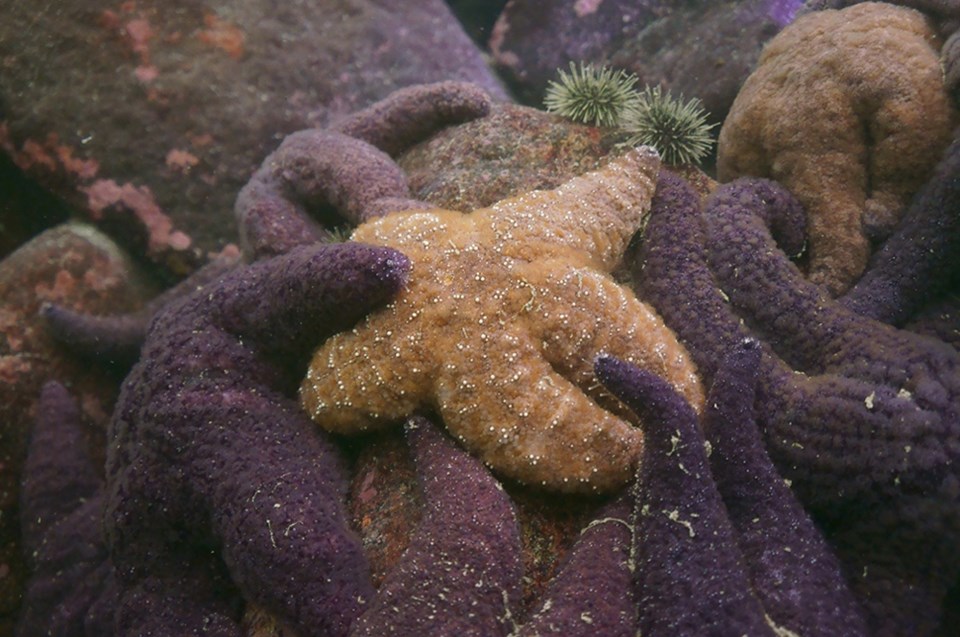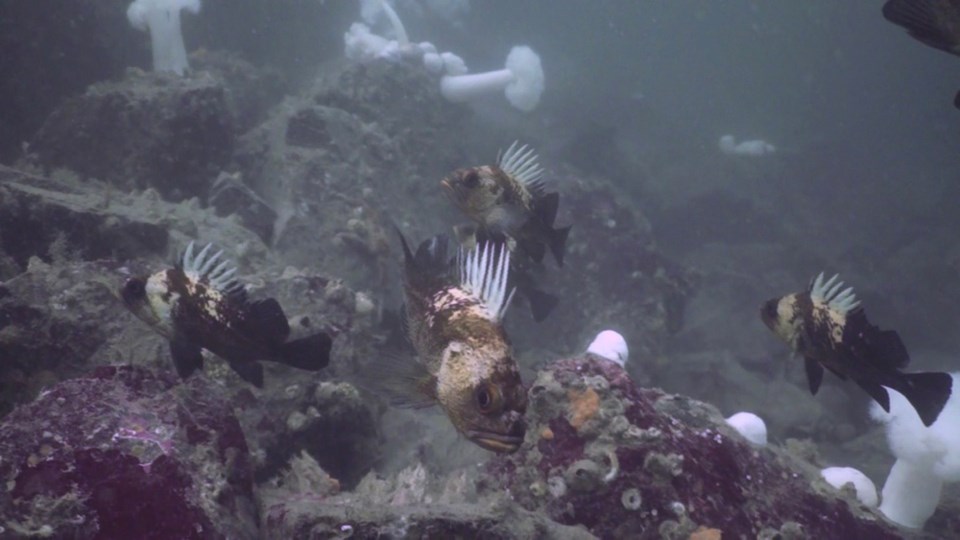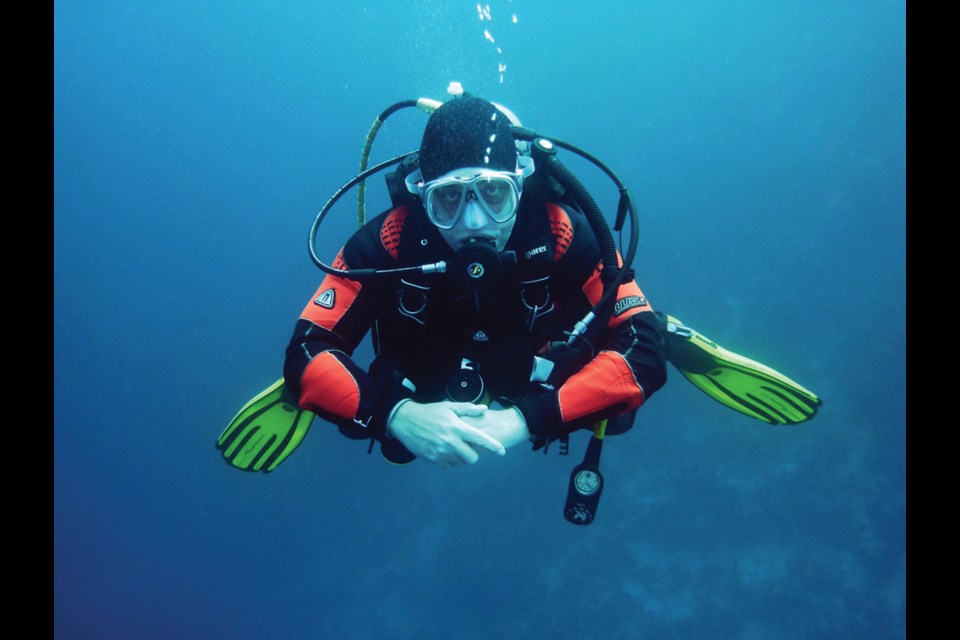Howe Sound is home to a number of different species — from fish and algae to vertebrates and marine mammals.
The region serves as a wilderness playground for people who live in the area, and it is a popular destination for thousands of tourists who visit every year.
“It’s really a unique example of where human activity is interfacing with the wild,” said Jessica Schultz, program manager of the Vancouver Aquarium’s Howe Sound Research and Conservation Group, which focuses on coastal ecology and monitoring for fish, vertebrates, and algae.
Unique to Howe Sound are shallow glass sponge reefs. The skeletons of glass sponges are made up of silicon dioxide, and they grow on top of each other, forming delicate twisting structures just beneath the surface.

The shallow glass sponge reefs in Howe Sound allow scuba divers to see them first-hand, whereas in other areas of the world you would need a submersible, or a camera, said Schultz.
The reefs are particularly fragile, and can be easily damaged by people anchoring their boats, which poses a risk for habitat damage, said Schultz.
Although the glass sponge reefs in Howe Sound are not officially considered endangered, several of the reefs are closed to bottom contact fishing or have been designated as marine protected areas through Fisheries and Oceans Canada, also known as the Department of Fisheries and Oceans, or DFO.
In order for a species to be officially considered at-risk in Canada, it must be listed by the Species at Risk Act, also known as SARA.
SARA was adopted in 2002 to prevent species of special concern from becoming endangered or threatened, and to provide for the recovery of endangered or threatened species as a result of human activity.
There are five different categories that a species can be assessed: not at risk, data deficient, special concern, threatened, and endangered.
Being listed with the SARA registry is a lengthy process, and requires a formal assessment substantiated with data.
This means that there are a number of species that have been recommended for listing, but aren’t technically listed as at-risk, said Schultz.

“And then there’s a number of species that are at-risk for various reasons but haven’t been assessed yet, but they may be found to be at-risk once there’s more data, or once the committee gets around to doing an assessment,” she said.
The glass sponge reefs provide habitat for many aquatic species, including rockfish.
Rockfish have historically been very depleted throughout the Strait of Georgia, and even more so in Howe Sound since the population dropped significantly in the 1990s.
Since then, the whole area has been closed to rockfish fishing, and a number of conservation areas have been developed.
There are currently three species of rockfish in Howe Sound that are listed on the SARA registry: quillback rockfish (threatened), canary rockfish (threatened), and yelloweye rockfish (special concern).
But all rockfish are easily subjected to pressure from fishing, said Schultz.
“They can live over a century and they don’t mature until they’re older, so what that means is that fish that are most desirable to fisherman — which are the biggest ones — are also the most reproductive. So, they can be quite significantly impacted by fishing pressure, and then they’re slow to recover because they’re so old,” she explained.
The other factor that puts them at-risk is their air-filled swim bladder, which expands if they are brought up to the surface, making it difficult to release them if they are caught accidentally, Schultz said.
Sea stars have also been considered at-risk in Howe Sound for years since sea star wasting was discovered along the coast from Alaska to California back in 2013.
In the first couple of years, there was about a 90 per cent decline in the presence of predatory sea stars, particularly the sunflower star, said Schultz.
“The populations are still quite low, although it’s not quite as striking and prevalent as it was a couple years ago,” she said.
Now, they are looking at how the severe decline of sea stars has affected the rest of the marine ecosystem.
Sea star wasting has triggered what is called a trophic cascade in Howe Sound, which means that there is an alternating impact on each level of the food chain.
She explained that the sea star’s prey, such as urchins, which eat kelp, have exploded in number, and as a result kelp is facing threats linked to the sea star situation.
Many marine mammals can also be found throughout Howe Sound, including humpback whales and steller sea lions.
Andrew Trites, director of the Marine Mammal Research Unit at UBC, works with graduate students and focuses on trying to resolve conflicts between people and marine mammals. In many cases, that means trying to determine whether fishing has caused a decline in population, or if marine mammals have an impact on other species.
He refers to his work as ecological detective work.
“It’s about trying to understand the animal within the ecosystem and figure out what can be done to potentially help them,” he said.
An essential part of the ecosystem in Howe Sound is transient killer whales, which only prey on marine mammals like seals and sea lions.
The population of transient killer whales that visit Howe Sound has been increasing since the 1970s, but they are a small population and threatened because of their size.
“The biggest risk for them is that they have very high levels of chemical contaminants because they feed on marine mammals,” said Trites.
“Because of bio-accumulation, marine mammals concentrate some of the chemicals that people have made, and that got into the marine ecosystem, and so the transients are quite contaminated.”
Many different criteria are used to determine the status of a species. One is the size of the population. Another is the number of breeding sites.
Steller sea lions are listed as special concern based on their limited number of breeding locations in B.C.
“They’re very abundant, but because they’re concentrated in just three locations where all the pups are born, they’re at risk of a catastrophic event happening,” explained Trites.
Another factor in the listing of species is their food supply.

Southern resident killer whales, for example, don’t eat “just any old chinook salmon,” said Trites. Instead, they like the older, bigger fish, ideally, the four or five-year-olds.
“And so we suspect that killer whales probably do have an impact on the numbers of big fish that come back, and so there is the potential for an ecosystem effect,” said Trites.
Schultz stresses that it’s important to remember that everything people do on land has an impact on the oceans and that we are all a part of the same ecosystem.
“We think of oceans and land as two different things, but in nature, there really are no boundaries, so the ocean affects us and we affect the oceans; everything from how we deal with stormwater to what we flush down the toilet, or where we anchor our boat,” she said.




